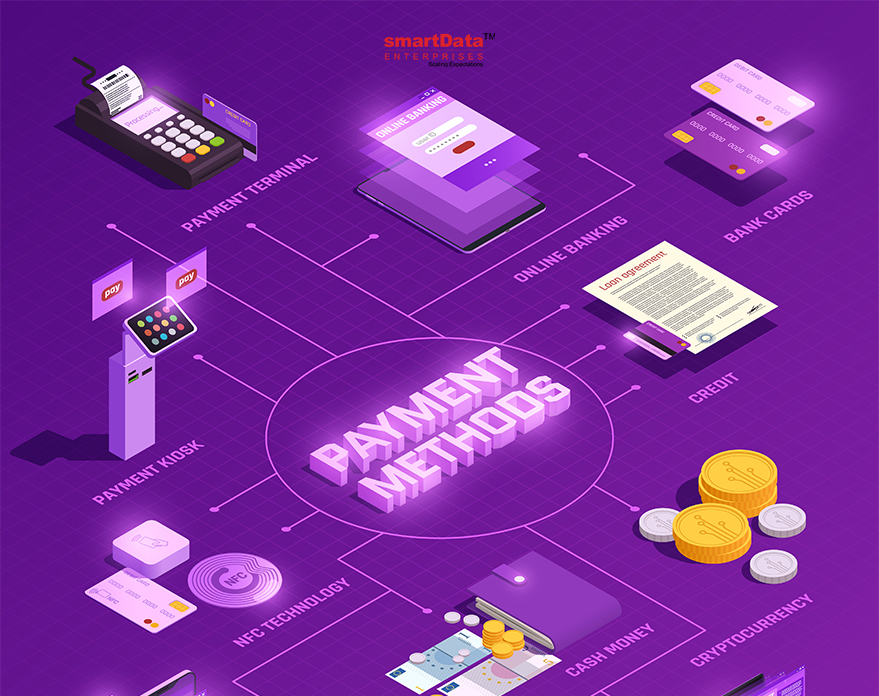As the metaverse gains traction, the banking and finance sector find themselves competitive in this new digital frontier. Consumers need cost-effective and secure payment methods that turn their vision into reality.
Many organizations feel the need for change to reevaluate the payment options as they want to offer more choices to users to control their savings. That’s where Web3 comes in the field.
Web3 said to be the next phase of the internet, is poised to revolutionize the way we transact and process payments. The emergence of blockchain technology, decentralized finance (DeFi), and artificial intelligence (AI) is bringing significant changes to the payments landscape.
In this blog post, we will explore numerous ways in which Web3 is transforming the future of payments and the financial sector as a whole.
Web2 vs Web3 Payments
The key difference between Web 2 and Web 3 payments lies in the underlying technology that powers each payment system.
Web 2 payment systems rely on centralized intermediaries such as banks, credit card companies, and payment processors to facilitate transactions. On the other hand, Web 3 payment systems are built on blockchain technology, which enables decentralized application development (Dapps) and trustless transactions.
Speed: Web 3 payments can be faster than Web 2 payments, as they don’t require intermediaries to approve and process transactions.
Security: Web 3 payments are more secure than Web 2 payments, as blockchain technology ensures that transactions are recorded immutably and are resistant to fraud and tampering.
Transparency: Web 3 payments are more transparent than Web 2 payments, as all transactions are recorded on the blockchain and can be audited by anyone.
Overall, Web 3 payment systems offer a more secure, transparent, and decentralized payment option than Web 2 payment systems.
Significance of Web3 in Transforming the Financial Sector
- Decentralization
Web3 promises to introduce decentralized payment systems that operate on blockchain technology, removing the need for intermediaries such as banks and payment processors. Transactions can be completed more quickly and securely, and the cost of processing transactions can be significantly reduced.
- Smart Contracts
These are self-executing contracts that enforce the terms of an agreement. This eliminates intermediaries and streamlines payment processing as well as automates transactions.
- Cryptocurrencies
The use of cryptocurrencies is another significant aspect of Web3’s impact on payments. Cryptocurrencies use encryption techniques to regulate the generation of units of currency and verify the transfer of funds. Many companies have already started accepting cryptocurrencies as a form of payment, and we can expect to see more widespread adoption of cryptocurrencies in the future.
- Non-fungible Tokens (NFTs)
NFTs are unique digital assets that are stored on blockchain technology. They can be used to represent ownership of a particular item, such as artwork, music, or even virtual real estate. NFTs can be used as a form of payment, allowing buyers and sellers to exchange assets directly without intermediaries.
- AI-powered Payment Systems
Web3 also offers AI-powered payment systems that use machine learning algorithms to analyze user behaviour and predict payment patterns. This technology can help companies detect fraud, prevent chargebacks, and offer personalized payment options to customers.
How smartData took an innovative step towards secure payment solutions
smartData Enterprises is a global software development company that provides a range of web3-based payment services that enables enterprises and startups to handle sensitive information and financial transactions.
Many startups are looking at Blockchain technology as a new disruptive technology. We at smartData provide them with top Blockchain-based Smart Contracts and Ethereum-based dApp development expertise to make their transactions more secure and safer.
Our skilled blockchain developers assist in dApp development and have expertise in hyperledger, Stellar, Ethereum, solidity and custom sidechain development.
Other than that, we successfully implemented Smart Contracts and Cryptocurrencies products to maintain data transparency and open up opportunities for direct peer-to-peer interaction in this sharing economy.
If you want to develop decentralized finance applications, our team will help you with the top solutions. Connect with us now.
How to Process Payments in Web3
Making payments in web3 typically includes various methods. Let’s understand them one by one to make successful completion after every payment.
- Get a Web3-enabled wallet
Web3 wallets can be used to store digital assets from fungible and non-fungible tokens (NFTs). You need a Web3-enabled wallet that supports the blockchain network you want to use. Examples of popular Web3 wallets include MetaMask, Trust Wallet, and MyEtherWallet.
- Fund your wallet
You’ll need to fund your Web3 wallet with cryptocurrencies such as Bitcoin, Ethereum, or other tokens supported by the blockchain network you want to use.
- Connect your wallet to the blockchain network
You need to connect your Web3 wallet to the blockchain network you want to use, either through a browser extension or a mobile app. This allows you to interact with decentralized applications (dApps) and conduct transactions on the blockchain network.
- Choose a dApp
A dApp that supports the blockchain network you want to use and navigate to its payment page.
- Fill Payment Details
Enter the payment details, such as the amount to be sent, the recipient’s wallet address, and any other required information.
- Confirm the transaction
Once you complete the payment details, review the transaction details and confirm the transaction by clicking the “Send” button. The transaction will then be broadcast to the blockchain network for processing.
- Wait for confirmation
Wait for the transaction to be confirmed on the blockchain network, which may take several minutes depending on the network’s congestion.
Future of Web3 Payment Platforms
As more people and businesses become aware of the benefits of blockchain technology, we can expect to see a surge in demand for Web3 payment platforms in the coming years.
- The boom of #DeFi and blockchain-based payment solutions will preserve to force the adoption of virtual currencies and decrease reliance on conventional banking systems.
- Web3 payment platforms will become the norm, allowing businesses to make and receive payments more efficiently and cost-effectively.
- The advent of #micropayments will enable the introduction of new business models such as pay-as-you-go streaming and content consumption.
- With the rise of decentralised autonomous organisations (DAO), businesses will be able to automate payment procedures and eliminate the need for intermediaries.
Final Words
To sum up, As these technologies continue to evolve. We can expect to see more innovative payment solutions that offer faster, cheaper, and more secure transactions. Businesses and individuals who embrace these new payment systems stand to benefit from reduced transaction costs, faster processing times, and enhanced security.
Blockchain-based payment solutions offer a range of benefits for organizations, including increased security, transparency, cost savings, accessibility, and efficiency. As such, we will likely see more organizations adopting blockchain-based payment solutions in the future.
Our technology experts will help you with the topmost software solutions and resolve your product requirements conveniently.








